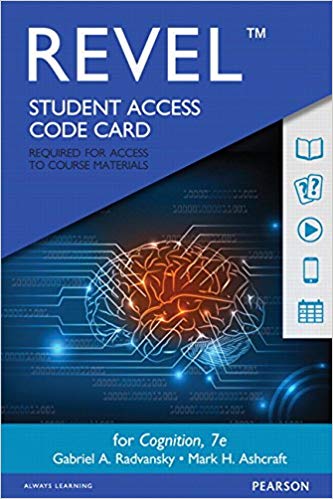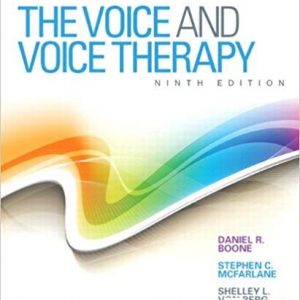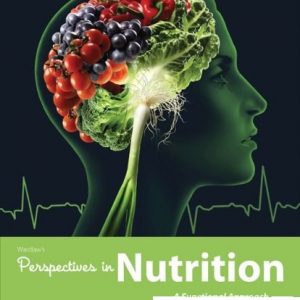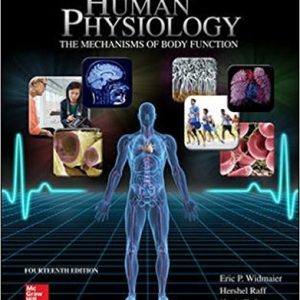Instant download Test Bank for Cognition 7th Edition by Radvansky pdf docx epub after payment.

Product details:
- ISBN-10 : 0134832620
- ISBN-13 : 978-0134832623
- Author:
Table of contents:
- 1 Cognitive Psychology
- 1.1 Thinking About Thinking
- 1.2 Memory and Cognition Defined
- 1.3 An Introductory History of Cognitive Psychology
- 1.3.1 Anticipations of Psychology
- 1.3.2 Early Psychology
- 1.3.3 Behaviorism
- 1.3.4 Emerging Cognition
- 1.4 Cognitive Psychology and Information Processing
- 1.5 Measuring Information Processes
- 1.5.1 Interpreting Graphs
- 1.5.2 Time and Accuracy Measures
- 1.6 The Standard Theory and Cognitive Science
- 1.6.1 The Standard Theory
- 1.6.2 A Process Model
- 1.6.3 Revealing Assumptions
- 1.6.4 Cognitive Science
- 1.7 Themes of Cognition
- Summary: Cognitive Psychology
- 2 Cognitive Neuroscience
- 2.1 The Brain and Cognition Together
- 2.1.1 Dissociations and Double Dissociations
- 2.2 Basic Neurology
- 2.2.1 Neuron Structure
- 2.2.2 Neural Communication
- 2.2.3 Neurons and Learning
- 2.3 Important Brain Structures and Function
- 2.3.1 Subcortical Brain Structures
- 2.3.2 Cortical Brain Structures
- 2.3.3 Principles of Functioning
- 2.3.4 Split-Brain Research and Lateralization
- 2.3.5 Cortical Specialization
- 2.3.6 Levels of Explanation and Embodied Cognition
- 2.4 Neuroimaging
- 2.4.1 Structural Measures
- 2.4.2 Electrical Measures
- 2.4.3 Metabolic Measures
- 2.4.4 Other Methods
- 2.5 Connectionism
- Summary: Cognitive Neuroscience
- 3 Sensation and Perception
- 3.1 Psychophysics
- 3.1.1 Detection and Absolute Thresholds
- 3.1.2 Discrimination
- 3.1.3 Decisions About Physical and Mental Differences
- 3.1.4 Signal Detection Theory
- 3.2 Visual Sensation and Perception
- 3.2.1 Gathering Visual Information
- 3.2.2 Synesthesia
- 3.2.3 Visual Sensory Memory
- 3.2.4 The Early Parts of a Fixation
- 3.2.5 Visual Attention
- 3.2.6 Trans-saccadic Memory
- 3.3 Pattern Recognition
- 3.3.1 Gestalt Grouping Principles
- 3.3.2 The Template Approach
- 3.3.3 Visual Feature Detection
- 3.4 Top-Down Processing
- 3.4.1 Conceptually Driven Pattern Recognition
- 3.4.2 Connectionist Modeling
- 3.5 Object Recognition and Agnosia
- 3.5.1 Recognition by Components
- 3.5.2 Context and Embodied Perception
- 3.5.3 Agnosia
- 3.5.4 Implications for Cognitive Science
- 3.6 Auditory Sensation and Perception
- 3.6.1 Auditory Sensory Memory
- 3.6.2 Auditory Pattern Recognition
- Summary: Sensation and Perception
- 4 Attention
- 4.1 Multiple Meanings of Attention
- 4.1.1 Attention as a Mental Process
- 4.1.2 Attention as a Limited Mental Resource
- 4.2 Basic Input Attentional Processes
- 4.2.1 Alertness and Arousal
- 4.2.2 Orienting Reflex and Attention Capture
- 4.2.3 Visual Search
- 4.2.4 Contrasting Input and Controlled Attention
- 4.2.5 Video Games as Mechanisms for Improving Attention
- 4.2.6 Hemineglect
- 4.3 Controlled, Voluntary Attention
- 4.3.1 Selective Attention and the Cocktail Party Effect
- 4.3.2 Selection Models
- 4.4 Attention as a Mental Resource
- 4.4.1 Automatic and Controlled Processing
- 4.4.2 The Role of Practice in Automaticity
- 4.4.3 Disadvantages of Automaticity
- Summary: Attention
- 5 Short-Term Working Memory
- 5.1 A Limited-Capacity Bottleneck
- 5.1.1 Short-Term Memory Capacity
- 5.1.2 Forgetting From Short-Term Memory
- 5.2 Short-Term Memory Retrieval
- 5.2.1 Serial Position Effects
- 5.2.2 Short-Term Memory Scanning
- 5.3 Working Memory
- 5.3.1 The Components of Working Memory
- 5.3.2 The Central Executive
- 5.3.3 The Phonological Loop
- 5.3.4 The Visuo-Spatial Sketch Pad
- 5.3.5 The Episodic Buffer
- 5.3.6 Engle’s Controlled Attention Model
- 5.4 Assessing Working Memory
- 5.4.1 Dual Task Method
- 5.4.2 Working Memory Span
- 5.4.3 Improving Working Memory
- 5.5 Working Memory and Cognition
- 5.5.1 Working Memory and Attention
- 5.5.2 Working Memory and Long-Term Memory
- 5.5.3 Working Memory and Reasoning
- 5.5.4 Sometimes Small Working Memory Spans Are Better
- 5.5.5 Working Memory Overview
- Summary: Short-Term Working Memory
- 6 Learning and Remembering
- 6.1 Preliminary Issues
- 6.1.1 Mnemonics
- 6.1.2 The Ebbinghaus Tradition
- 6.1.3 Memory Consolidation
- 6.1.4 Metamemory
- 6.2 Storing Information in Episodic Memory
- 6.2.1 Rehearsal
- 6.2.2 Depth of Processing
- 6.2.3 Challenges to Depth of Processing
- 6.3 Boosting Episodic Memory
- 6.3.1 The Self-Reference Effect
- 6.3.2 Generation, Production, and Enactment
- 6.3.3 Organization in Storage
- 6.3.4 Improving Memory
- 6.3.5 Imagery
- 6.3.6 Adaptive Memory
- 6.4 Context
- 6.4.1 Encoding Specificity
- 6.4.2 Source Monitoring
- 6.5 Facts and Situation Models
- 6.5.1 The Nature of Propositions
- 6.5.2 Situation Models
- 6.6 Autobiographical Memories
- 6.6.1 Psychologists as Subjects
- 6.6.2 Infantile Amnesia
- 6.6.3 Reminiscence Bump
- 6.6.4 Involuntary Memory
- 6.7 Memory for the Future
- 6.7.1 Prospective Memory
- 6.7.2 Episodic Future Thinking
- Summary: Learning and Remembering
- 7 Knowing
- 7.1 Semantic Memory
- 7.1.1 Persistence of Semantic Knowledge
- 7.1.2 Semantic Networks
- 7.1.3 Feature Comparison Models
- 7.1.4 Tests of Semantic Memory Models
- 7.1.5 Semantic Relatedness
- 7.2 Connectionism and the Brain
- 7.2.1 Connectionism
- 7.2.2 The Benefits of Connectionist Models
- 7.3 Semantic Priming
- 7.3.1 Nuts and Bolts of Priming Tasks
- 7.3.2 Empirical Demonstrations of Priming
- 7.3.3 Automatic and Controlled Priming
- 7.3.4 Priming Is Implicit
- 7.4 Schemata and Scripts
- 7.4.1 Bartlett’s Research
- 7.4.2 Schemata
- 7.4.3 Scripts
- 7.5 Concepts and Categorization
- 7.5.1 Classic View of Categorization
- 7.5.2 Characteristics of Human Categories
- 7.5.3 Probabilistic Theories of Categorization
- 7.5.4 Explanation-Based Theories
- Summary: Knowing
- 8 Memory and Forgetting
- 8.1 The Seven Sins of Memory
- 8.2 Forgetting Through Decay and Interference
- 8.2.1 Paired-Associate Learning
- 8.2.2 Associative Interference
- 8.2.3 Situation Models and Interference
- 8.2.4 Overcoming Forgetting from Interference
- 8.2.5 Retrieval Cues
- 8.2.6 Part-Set Cuing Effect
- 8.3 False Memories, Eyewitness Memory, and “Forgotten Memories”
- 8.3.1 False Memories
- 8.3.2 Integration
- 8.3.3 Leading Questions and Memory Distortions
- 8.3.4 The Misleading Information Effect
- 8.3.5 Source Misattribution and Misinformation Acceptance
- 8.3.6 Stronger Memory Distortion Effects
- 8.3.7 Repressed and Recovered Memories
- 8.3.8 The Irony of Memory
- 8.4 Amnesia and Implicit Memory
- 8.4.1 Dissociation of Episodic and Semantic Memory
- 8.4.2 Anterograde Amnesia
- 8.4.3 Implicit and Explicit Memory as Revealed by Amnesia
- Summary: Memory and Forgetting
- 9 Language
- 9.1 Linguistic Universals and Functions
- 9.1.1 Defining Language
- 9.1.2 Language Universals
- 9.1.3 Animal Communication
- 9.1.4 Levels of Analysis
- 9.2 Phonology
- 9.2.1 Sounds in Isolation
- 9.2.2 Combining Phonemes into Morphemes
- 9.2.3 Speech Perception and Context
- 9.2.4 The Effect of Context
- 9.2.5 Top-Down and Bottom-Up Processes
- 9.2.6 Embodiment in Speech Perception
- 9.2.7 The Puzzle of Apparent Segments in Speech
- 9.3 Syntax
- 9.3.1 Chomsky’s Transformational Grammar
- 9.3.2 Limitations of Transformational Grammar
- 9.3.3 The Cognitive Role of Syntax
- 9.3.4 Prosody
- 9.4 Lexical Factors
- 9.4.1 Morphemes
- 9.4.2 Lexical Representation
- 9.4.3 Polysemy
- 9.5 Semantics
- 9.5.1 Case Grammar
- 9.5.2 Interaction of Syntax and Semantics
- 9.5.3 Evidence for the Semantic Grammar Approaches
- 9.6 Brain and Language
- 9.6.1 Language in the Intact Brain
- 9.6.2 Aphasia
- 9.6.3 Generalizing from Cases of Brain Damage
- Summary: Language
- 10 Comprehension
- 10.1 Conceptual and Rule Knowledge
- 10.1.1 Comprehension Research
- 10.1.2 Online Comprehension Tasks
- 10.1.3 Metacomprehension
- 10.1.4 Comprehension as Mental Structure Building
- 10.1.5 Levels of Comprehension
- 10.2 Reading
- 10.2.1 Gaze Duration
- 10.2.2 Basic Online Reading Effects
- 10.2.3 Benefits of Online Reading
- 10.2.4 Factors That Affect Reading
- 10.3 Reference, Situation Models, and Events
- 10.3.1 Reference
- 10.3.2 Situation Models
- 10.3.3 Events
- 10.4 Conversation and Gesture
- 10.4.1 The Structure of Conversations
- 10.4.2 Cognitive Conversational Characteristics
- 10.4.3 Empirical Effects in Conversation
- 10.4.4 Metaphors and Idioms
- 10.4.5 Gesture
- Summary: Comprehension
- 11 Reasoning and Decision Making
- 11.1 Formal Logic and Reasoning
- 11.1.1 Categorical Syllogisms
- 11.1.2 Theories of Syllogistic Reasoning
- 11.1.3 Conditional Reasoning
- 11.1.4 Hypothesis Testing
- 11.2 Decisions
- 11.2.1 Algorithms and Heuristics
- 11.3 Classic Heuristics, Biases, and Fallacies
- 11.3.1 The Representativeness Heuristic
- 11.3.2 The Availability Heuristic
- 11.3.3 The Simulation Heuristic
- 11.3.4 Elimination by Aspects
- 11.3.5 The Undoing Heuristic
- 11.4 Framing and Risky Decisions
- 11.4.1 Risk Aversion and Seeking
- 11.4.2 Outcome Magnitude
- 11.5 Adaptive Thinking and “Fast and Frugal” Heuristics
- 11.5.1 Some Fast and Frugal Heuristics in Detail
- 11.5.2 The Ongoing Debate
- 11.6 Other Explanations
- 11.6.1 Bayesian Theories
- 11.6.2 Quantum Theory
- 11.7 Limitations in Reasoning
- 11.7.1 Limited Domain Knowledge
- 11.7.2 Limitations in Processing Resources
People also search:
Cognition 7th Edition
Cognition 7th Edition pdf
Cognition
|
cognitive about myself brainly |





